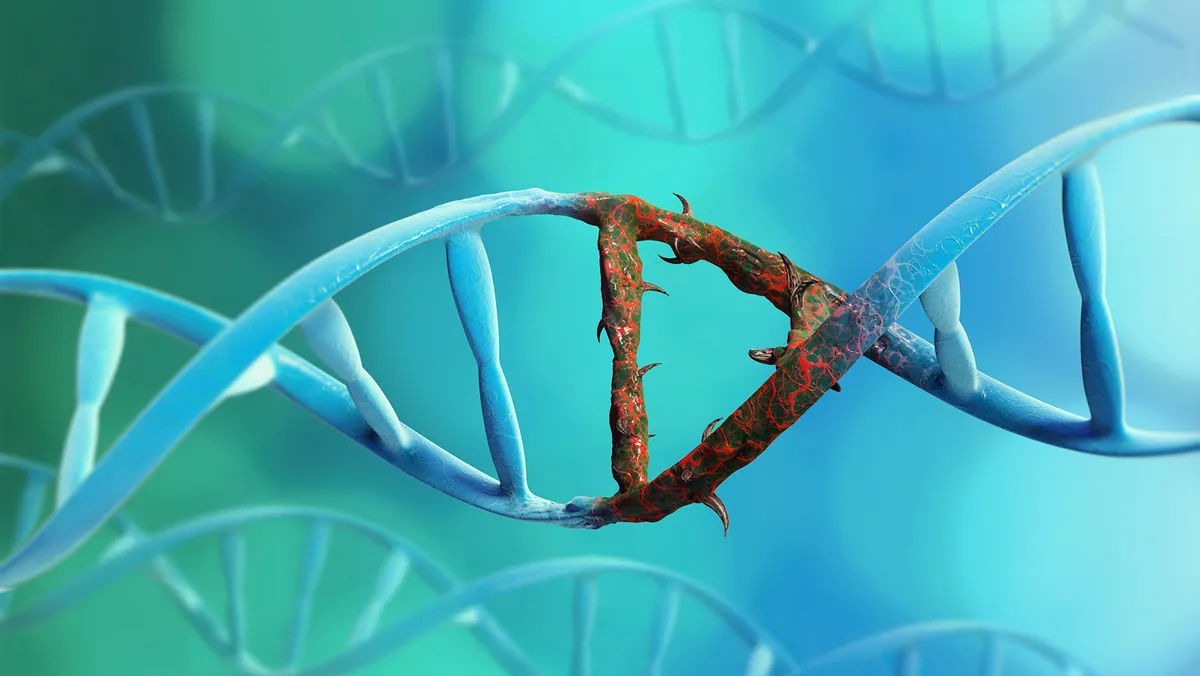Health
What enzyme fixes error in coding DNA?

DNA is the blueprint of life, storing the genetic information essential for growth, development, and reproduction. However, during DNA replication or due to environmental factors, errors can occur in the coding sequence.
These errors, if left uncorrected, can lead to mutations that impact cellular function and overall health. Understanding what enzyme fixes error in coding DNA is crucial in the study of genetics and molecular biology.
This guide explores the role of specific enzymes in DNA repair mechanisms.
What causes errors in coding DNA?
Errors in coding DNA can arise from several sources, disrupting the accurate replication of genetic material.
Common causes of DNA errors
- Replication mistakes: DNA polymerase can occasionally incorporate incorrect nucleotides during replication.
- Environmental factors: UV radiation, chemicals, and reactive oxygen species can damage DNA.
- Spontaneous mutations: Base pair mismatches or spontaneous chemical changes in nucleotides.
Potential consequences of DNA errors
- Silent mutations: Errors that do not affect protein function.
- Harmful mutations: Errors leading to nonfunctional or harmful proteins.
- Genetic disorders: Accumulation of errors can contribute to diseases like cancer.
What enzyme fixes errors in coding DNA?
Specific enzymes are responsible for detecting and repairing errors in DNA. These enzymes work in different DNA repair pathways, ensuring the integrity of the genetic material.
1. DNA polymerase
DNA polymerase not only synthesizes new DNA strands but also has proofreading activity. It plays a crucial role in detecting and correcting errors during replication.
- Proofreading mechanism: DNA polymerase detects mismatched bases and removes them using its exonuclease activity. It then replaces the incorrect nucleotide with the correct one.
- Efficiency: This process ensures high fidelity during DNA replication.
2. DNA ligase
DNA ligase is involved in sealing breaks in the DNA backbone, which can occur during repair processes.
- Function: It joins Okazaki fragments during replication and seals nicks in repaired DNA.
- Importance: Ensures the stability of the DNA molecule after repair.
3. Glycosylase
Glycosylase enzymes are part of the base excision repair (BER) pathway.
- Function: Detects and removes damaged or incorrect bases by cleaving the glycosidic bond between the base and the sugar.
- Examples: Uracil-DNA glycosylase removes uracil incorporated into DNA due to deamination.
4. Nuclease
Nuclease enzymes are responsible for cutting out damaged or mismatched segments of DNA.
- Endonucleases: Cleave the DNA backbone within a strand.
- Exonucleases: Remove nucleotides from the ends of DNA.
- Role in repair: They remove damaged sections, allowing DNA polymerase and ligase to fill and seal the gaps.
5. Helicase
Helicase unwinds the DNA double helix, facilitating the repair process by exposing the damaged region.
- Function: Separates the two strands of DNA for repair machinery to access the damaged site.
- Relevance: Vital in processes like nucleotide excision repair (NER).
6. Photolyase
Photolyase enzymes repair damage caused by UV radiation.
- Function: Specifically targets thymine dimers, which are covalent bonds formed between adjacent thymine bases.
- Mechanism: Uses energy from visible light to break the dimer and restore normal base pairing.
DNA repair mechanisms involving these enzymes
DNA repair mechanisms like BER, NER, and MMR rely on enzymes such as polymerase, ligase, and nuclease to maintain genome integrity.
Base Excision Repair (BER)
- Process: Glycosylase removes the damaged base, followed by endonuclease and polymerase action to repair the site.
- Application: Corrects small, non-helix-distorting base lesions.
Nucleotide Excision Repair (NER)
- Process: Removes bulky lesions, such as thymine dimers, using helicase, nuclease, polymerase, and ligase.
- Importance: Prevents transcription blockage and maintains genome stability.
Mismatch Repair (MMR)
- Process: Identifies and repairs mismatched base pairs missed by DNA polymerase proofreading.
- Enzymes involved: Nuclease, polymerase, and ligase.
Double-Strand Break Repair
- Non-Homologous End Joining (NHEJ): Directly joins broken DNA ends using ligase.
- Homologous Recombination (HR): Uses a homologous sequence as a template for error-free repair.
Preventing DNA errors
While repair mechanisms are efficient, minimizing DNA damage can further protect genetic integrity.
Avoid environmental damage
- Reduce exposure to UV radiation by using sunscreen.
- Avoid contact with harmful chemicals and carcinogens.
Support DNA repair mechanisms
- Consume foods rich in antioxidants, such as berries and leafy greens.
- Maintain a healthy lifestyle to support cellular repair processes.
When DNA repair fails
Failures in DNA repair mechanisms can have significant consequences, including:
- Cancer: Accumulation of mutations in oncogenes and tumor suppressor genes.
- Aging: Increased DNA damage contributes to the aging process.
- Genetic Disorders: Conditions like xeroderma pigmentosum result from defective repair pathways.
To summarize
Understanding what enzyme fixes errors in coding DNA highlights the intricate mechanisms safeguarding genetic information. DNA polymerase, ligase, glycosylase, nuclease, helicase, and photolyase play essential roles in detecting and repairing errors.
These enzymes, working within specialized repair pathways, ensure the integrity of the genetic material, protecting organisms from harmful mutations and maintaining overall cellular health.
